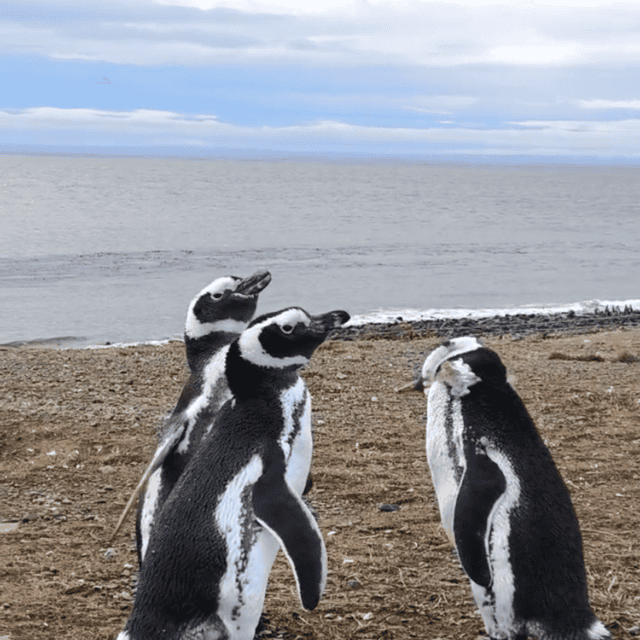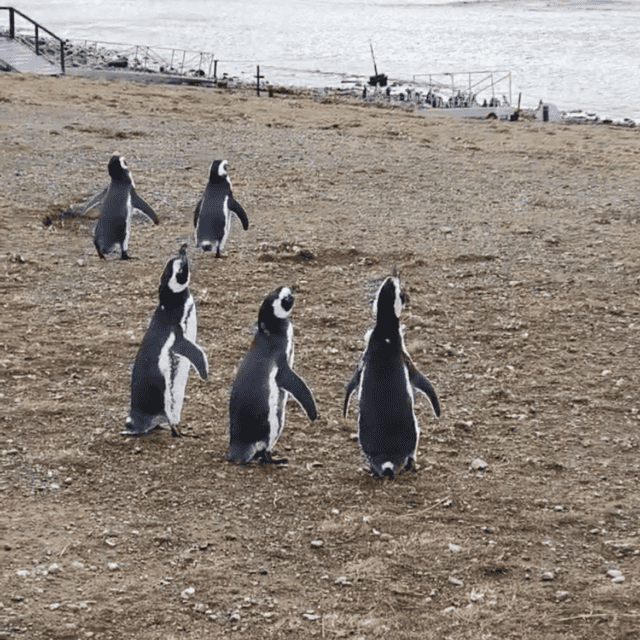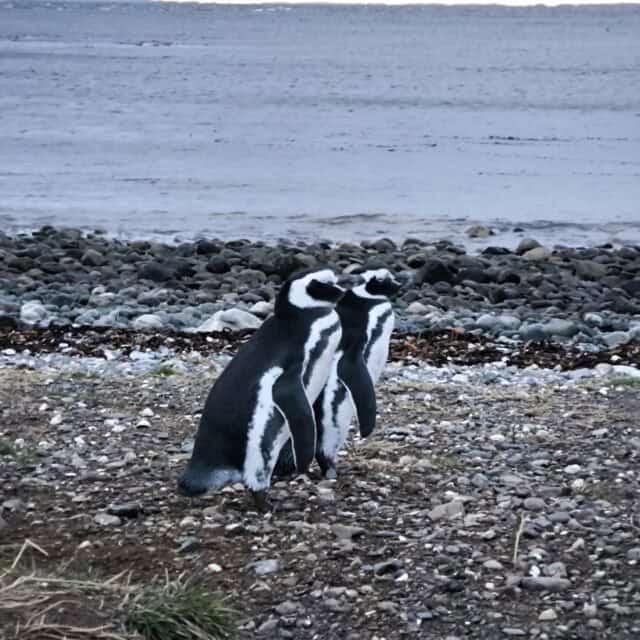Walking with Penguins on Magdalena Island in Patagonia: A Day Trip on the Punta Arenas Penguins Tour
Patagonia is full of surreal landscapes—towering peaks, moody skies, and endless steppe. But one of our trip’s most unexpectedly magical moments was watching hundreds of penguins slowly gather the courage to leave their island home on the Punta Arenas Penguins Tour.
The penguins are on Isla Magdalena from October to March each year. We visited Isla Magdalena at the end of the season in March when the penguins started heading back to sea. Watching them psych themselves up to plunge into the waves was hilarious, adorable, and oddly moving.

Magellanic Penguins
Magellanic penguins are medium-sized penguins, about 60–70 cm/ 24-27 inches tall and weighing up to 5 kg. They come to Isla Magdalena every year between September and March for one important reason: to breed and raise their chicks. The island offers ideal conditions—soft soil for burrowing, few predators, and access to nutrient-rich waters for feeding. Little burrows cover the island, where the penguins hide inside from the wind and rain.
Penguins here are monogamous, often returning to the same nesting site and the same mate year after year. They dig burrows or nests under bushes, where the female usually lays two eggs. Both parents share the job of incubating and feeding the chicks, taking turns going out to sea for food. By late March, once the chicks have grown strong enough, the colony starts to disband. The penguins then migrate north, spending the winter months at sea off the coasts of Uruguay and southern Brazil before returning again the following spring.
Getting There: The Windy Way to Isla Magdalena
We booked our Punta Arena Penguins tour with Solo Expediciones, which I would absolutely recommend. The tour starts at 6:30 a.m. in the center of Punta Arenas. The bus will take you to the port, where a private enclosed boat will take you to Isla Magdalena.
It started with a chilly, early morning ride from Punta Arenas to Bahía Laredo, where we boarded a speedboat that would take us across the Strait of Magellan. The sea was a bit rough that day—true to Patagonia’s dramatic nature—and we all clung to our seats as the boat crashed through the waves. No one got physically sick on our boat, but I definitely recommend eating a light breakfast just in case.

End-of-Season Penguin Behavior Is Something Else
When we arrived at Isla Magdalena, the first thing that hit me—besides the wind—was the sound. The island buzzed with the squawks and chatter of hundreds of Magellanic penguins.
I had high expectations of how cute the penguins would be but they exceeded every cuteness expectation. Full cuteness overload.
At first glance, they were doing typical penguin things: waddling down dusty paths, poking their heads out of burrows, standing awkwardly still in the wind like little sentinels. But then I started noticing something unusual.
Many of the penguins were lined up along the water’s edge, pacing back and forth like nervous children at the deep end of the pool. Some would walk right up to the waves, stare for a while, then turn around and waddle back. They would squawk back and forth with their little penguin friends to psych each other up to go back into the cold sea.
Our guide explained that by this time of year (we were there in late March), most of the chicks were grown, and the adults were beginning to leave the island after their months-long stay.
Watching them hesitate at the shoreline, gathering in small groups as if whispering, “You go first,” was oddly touching. Every so often, one would suddenly flop forward into the surf, followed by a few more—a comical yet courageous penguin conga line into the ocean.
It felt like we were witnessing the very edge of a season—a transition. The island was still full of life but quieter than peak season, and the penguins seemed to know it was almost time to go.
The visit to Magdalena Island lasted one hour, with plenty of time to take in all the adorable penguins. We were the only boat on the island, which is definitely an advantage at going at the end of the season.
A Quick Visit to Isla Marta
After our hour-long stroll with the penguins (not nearly enough time, by the way), we got back on the boat, where they served warm coffee and hot chocolate. We headed to Isla Marta, home to a massive sea lion colony.

We didn’t land there but circled the island slowly while hundreds of sea lions barked, groaned, and sprawled across the rocks. There were both Patagonia Sealions and Walrus Sealions that you could spot from the boat. Our guide mentioned that sometimes the water is too rough to visit Isla Marta. We got lucky that we could get quite close, but it was definitely the section, I got the most sick to my stomach on the Punta Arenas Penguins Tour.
Things to know before your Punta Arenas Penguins Tour
- The boat will rock a lot on the Punta Arenas Penguins Tour, so eat a light breakfast before going. Take medicine for motion sickness if it something you usually struggle with.
- It will be very windy on the island —bring layers, gloves, and a windproof jacket.
- March is less crowded, our boat was the only one on the island, which helped bring you closer to nature.
- Bring binoculars or a great camera—the penguin expressions are pure gold. They will also be close enough for you to see with your naked eye but the binoculars are great for a close up view.

Final Thoughts
We spent a month in Patagonia, and this Punta Arenas Penguins Tour was one of our favorite things. It is expensive but cheaper than some of the other tours from Punta Arenas (like the whales). Waddling with the penguins was so magical. Their social nature to do everything with a few friends was adorable. Highly recommend!
